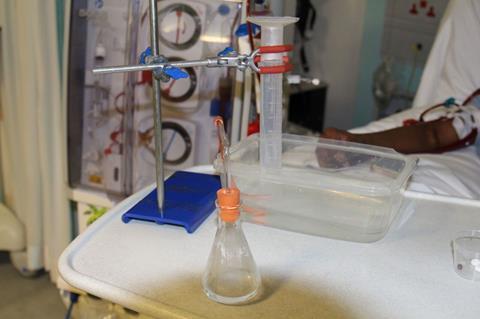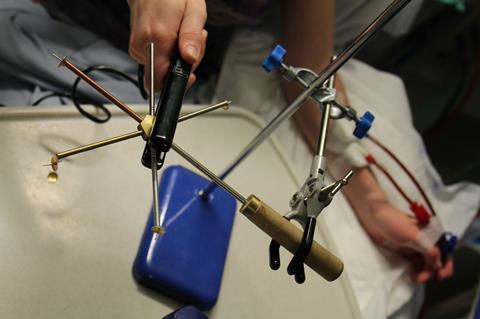Hospital school staff ensure ward patients can continue their entitled education – and that includes practical science. Assistant head Bianca Costa explains how a bit of resourcefulness and a pair of hair straighteners can go a long way towards successful practicals in unusual places.

The Children’s Hospital school provides continued education for inpatients unable to attend their own secondary or primary schools. We have classrooms at Great Ormond Street Children’s Hospital and University College Hospital and provide one-to-one bedside teaching for long-stay patients unable to leave their wards.
Our three secondary science teachers are faced with the challenge of teaching practical science without a lab and, more importantly, without an all-knowledgeable lab technician. The chemicals we can use are limited due to a lack of safe storage. But, there is little we can’t do or model.
A resourceful mindset
Over time we have built a respectable collection of lab equipment and resources. These ensure our pupils can continue to practice their practical skills to meet the curriculum’s demands. We’ve had some faux pas along the way; who knew it was so difficult to get the correct size bung? Despite meticulously measuring all our conical flasks I still ordered several sets of ill-fitting bungs before ones arrived that fitted. However, we’ve also made some great finds; our favourite is a transportable Bunsen burner, which has made our tea-light candles redundant.
We’ve discovered there’s not much that can’t be done with a kettle, hair straighteners or a hot plate!
Teaching practicals is hardest on wards where no naked flames are allowed at all. But you’ll still find science teachers at the bedside testing leaves for starch, measuring conduction rates or calculating the effect of temperature on reaction rates. We’ve discovered there’s not much that can’t be done with a kettle, hair straighteners or a hot plate!

Another challenge is giving the teaching team’s non-science specialists the confidence and support to deliver practical science on the wards. So, we developed a number of ‘ready to go’ boxes with everything that’s needed for an engaging practical activity for all ages. These activities include mixing citric acid and bicarbonate of soda to inflate a surgical glove and firing off Alka-Seltzer powered rockets, which is a favourite with medical staff and parents as well as the pupils. We designed these to be accessible to all. They can be delivered at a very simple level and extended to stretch our more able learners. Also, they are a really good starting point with a reluctant learner.
Making science fun
To further encourage all staff to deliver science, we celebrate science week annually and set challenges including making the bounciest ball, the fastest car, the strongest windmill and the tallest tower. All pupils take part and post their progress on our Google+ community page. The posts allow pupils to see what their peers are doing, even if they are working in isolation, and adds to the element of competition and fun.
Science is also represented in all our cross-curricular themed weeks. We have fun writing scientific conclusions as Haikus or describing specialised cells in Kennings on National Poetry Day. We work out the pressure of a ballerina’s toes on-point during Nutcracker-themed week and calculate the rate our jelly witches dissolve during Wizard-of-Oz week.
Some perks of the place
While working in a hospital environment does impose limitations, we’re compensated by the plethora of learning opportunities a hospital offers. We can visit the plant room to learn about the generator or an operating suite and find out about sterile procedure. We can see microbiologists at work in their labs and talk to a host of scientists, all without leaving the building!
Bianca Costa is assistant headteacher at The Children’s Hospital School in London, UK









No comments yet